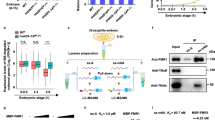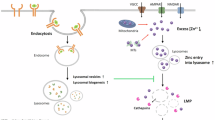Abstract
Overexpressed EGFP-FMRP has been used as a substitute for endogenous fragile X mental retardation protein (FMRP) in protein-protein interaction studies, and in studies concerning the composition, the formation and the localization of neuronal granules. However, the question of whether this tool truly recapitulates the properties of the endogenous protein has not been addressed. Here we demonstrate that overexpressed EGFP-FMRP forms three distinct granule types based on colocalization with various marker proteins. The majority of EGFP-FMRP-containing granules are larger and more amorphous than known granule types. Consistent with this, there is only partial colocalization with stress granule or P-body markers and no colocalization with a putative Drosophila ortholog neuronal granule marker. Nevertheless, agents such as arsenite and hippurstanol, which create endogenous stress granules and P-bodies, drive EGFP-FMRP into such granules. Additionally, whereas inhibiting cellular methyl-protein formation alters the composition of endogenous FMRP-containing stress granules, we found that such treatment had little effect on the formation of EGFP-FMRP granules, or their composition. Altogether these data suggest that many overexpressed EGFP-FMRP granules represent proto-stress granules requiring external stimuli for their conversion. More importantly, the inherent heterogeneity of these granules suggests that caution should be used in extrapolating results obtained with EGFP-tagged surrogates of FMRP to endogenous FMRP granules.
Similar content being viewed by others
Article PDF
Author information
Authors and Affiliations
Corresponding author
Rights and permissions
About this article
Cite this article
Denman, R. EGFP-FMRP Granules Are Proto-Granules That Can Be Shunted to Stress Granules During a Stress Response. Nat Prec (2010). https://doi.org/10.1038/npre.2010.5442.1
Received:
Accepted:
Published:
DOI: https://doi.org/10.1038/npre.2010.5442.1



